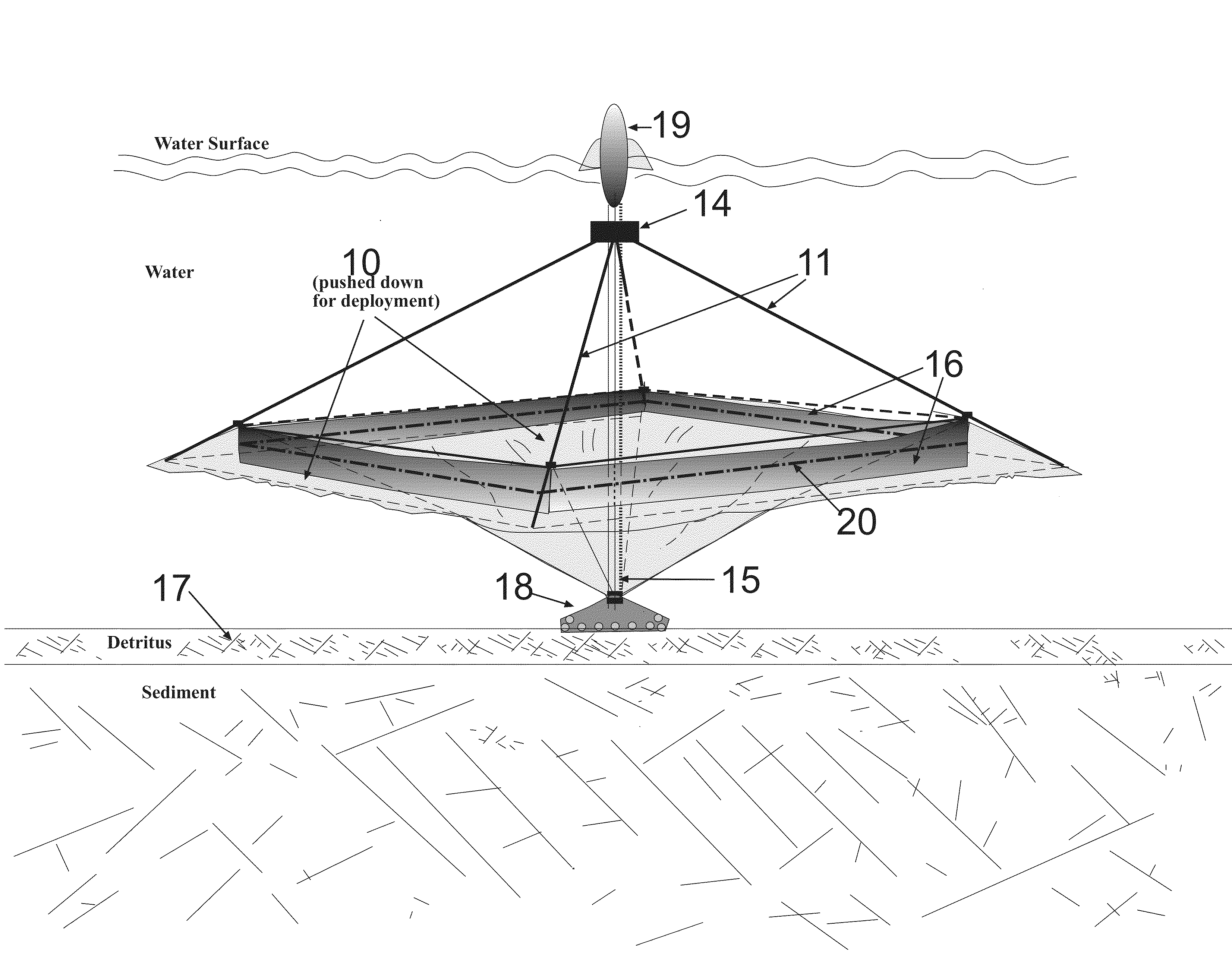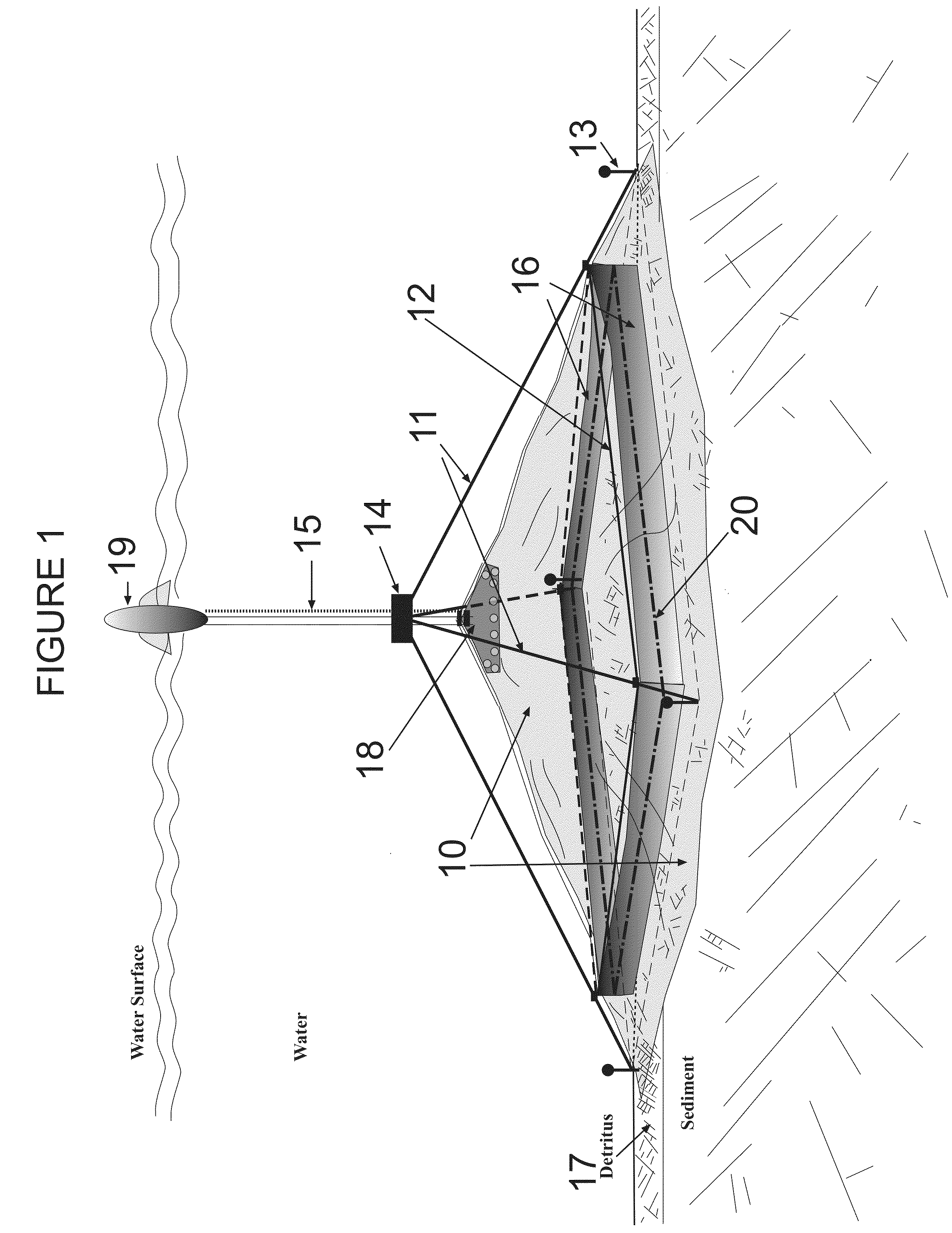Collapsible Aquatic Sediment Enclosure and Process for Removal of Contaminants
a technology of aquatic sediment and enclosure, which is applied in the direction of water cleaning, construction, and well accessories, etc., can solve the problems of clay removal, clay removal, and inconvenient use of chemicals in shallow water areas, so as to reduce physical disturbance and limit the amount of potential damage
- Summary
- Abstract
- Description
- Claims
- Application Information
AI Technical Summary
Benefits of technology
Problems solved by technology
Method used
Image
Examples
Embodiment Construction
[0018]Embodiments of the invention operate to effectively resolve four problems related to removal of contaminants in detritus and sediment of water bodies. First, the top layer of contaminated sediment and detritus is often very loose and can be easily disturbed and redistributed into the water column when using dredging techniques, heavy equipment or during application of chemicals and binders. The invention is a collapsible enclosure with a high ratio of aerial coverage to interior volume that can capture and isolate the targeted area of contaminants with minimal deployment disturbance to targeted contaminant areas. Second, contaminated detritus and sediment can be located in ecologically sensitive, littoral regions of water bodies that can be adversely impacted by other dredging techniques and apparatus or by the addition of chemicals or clays to bind or treat contaminants. The invention is primarily a light, soft structure that is ecologically sensitive enough to be deployed on...
PUM
 Login to View More
Login to View More Abstract
Description
Claims
Application Information
 Login to View More
Login to View More - R&D
- Intellectual Property
- Life Sciences
- Materials
- Tech Scout
- Unparalleled Data Quality
- Higher Quality Content
- 60% Fewer Hallucinations
Browse by: Latest US Patents, China's latest patents, Technical Efficacy Thesaurus, Application Domain, Technology Topic, Popular Technical Reports.
© 2025 PatSnap. All rights reserved.Legal|Privacy policy|Modern Slavery Act Transparency Statement|Sitemap|About US| Contact US: help@patsnap.com



